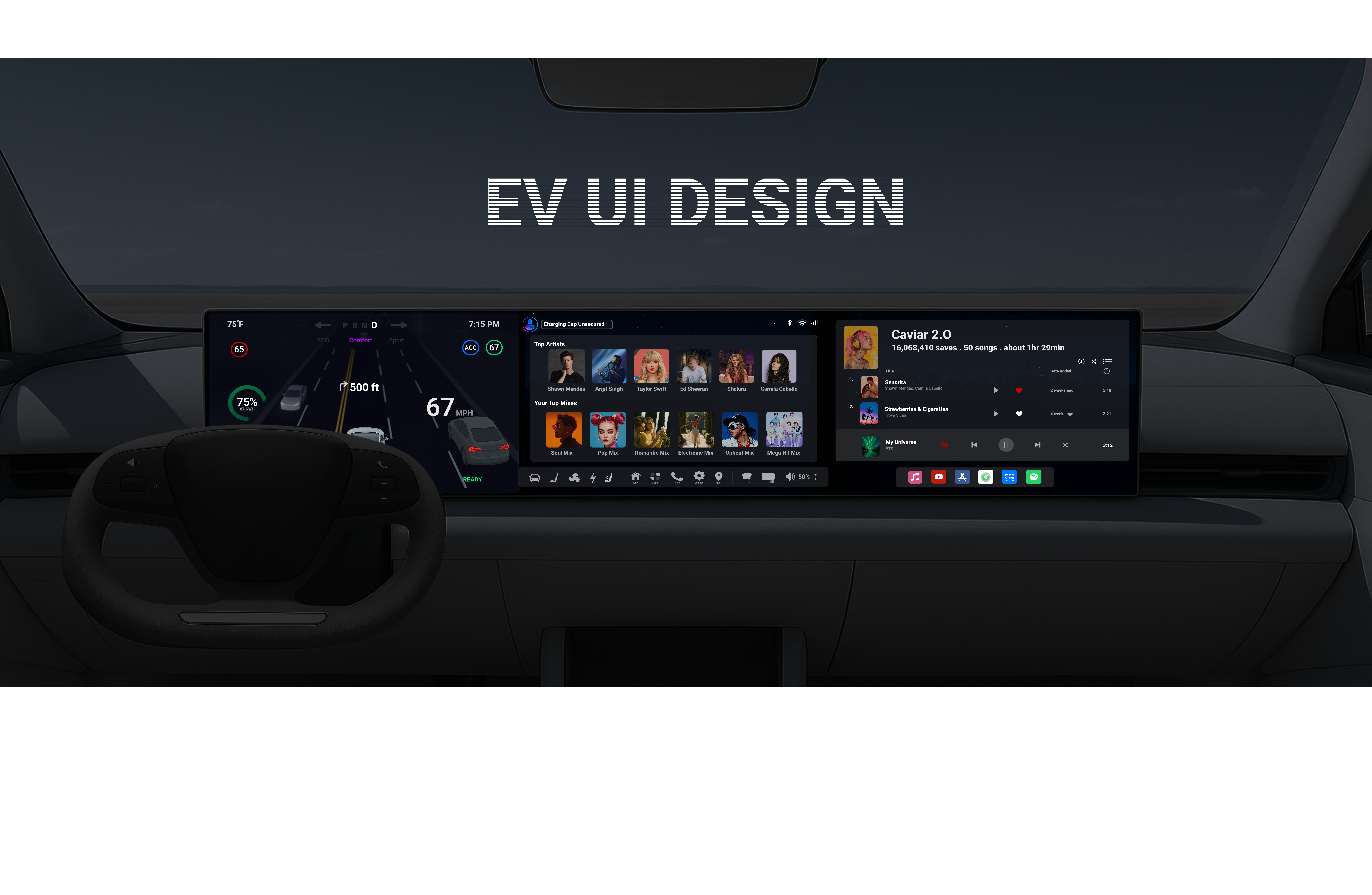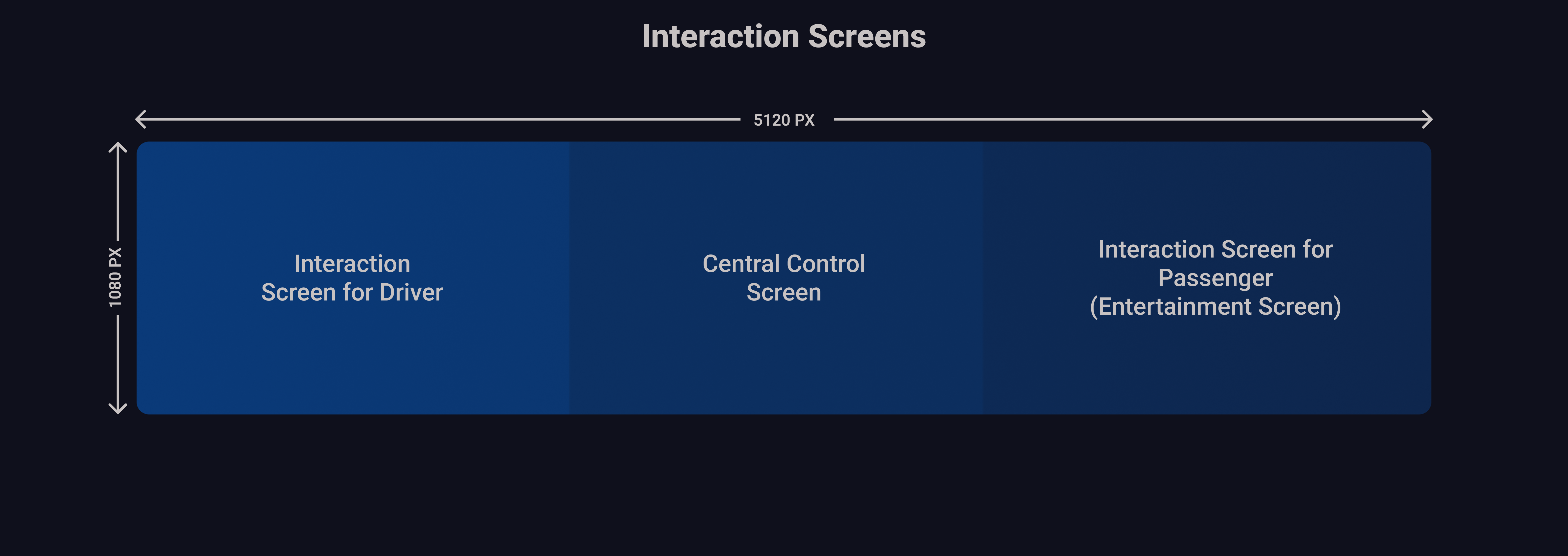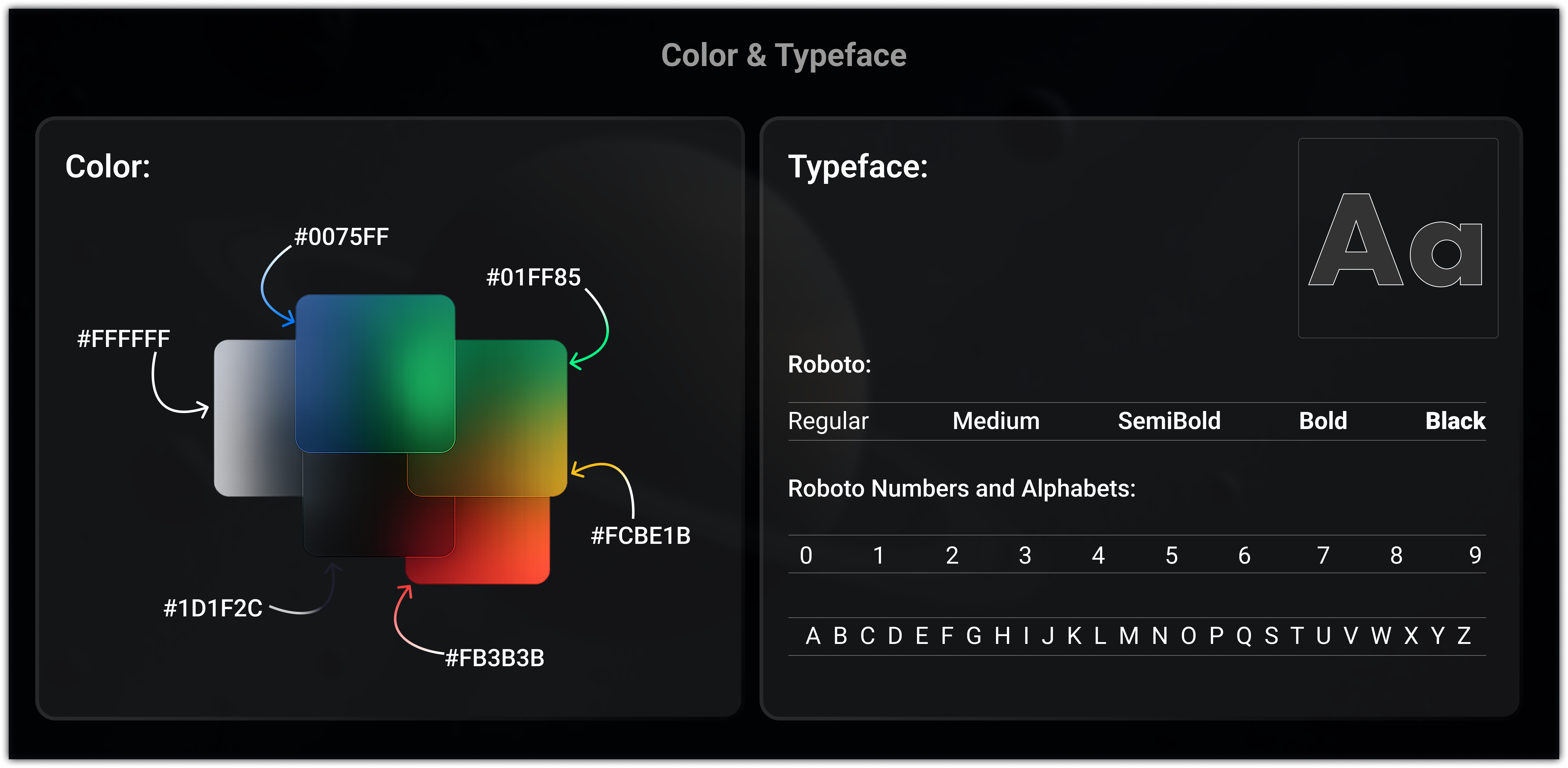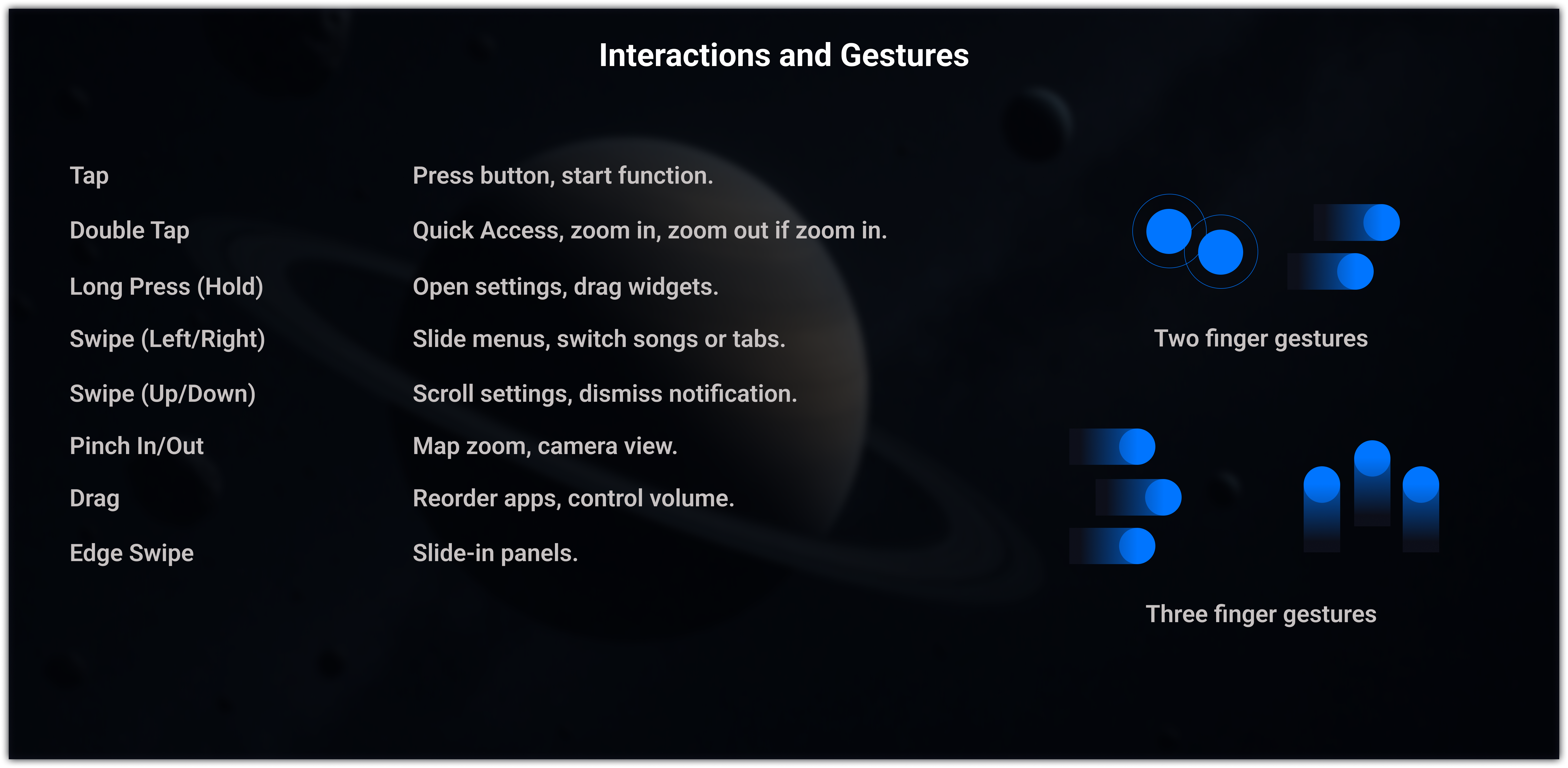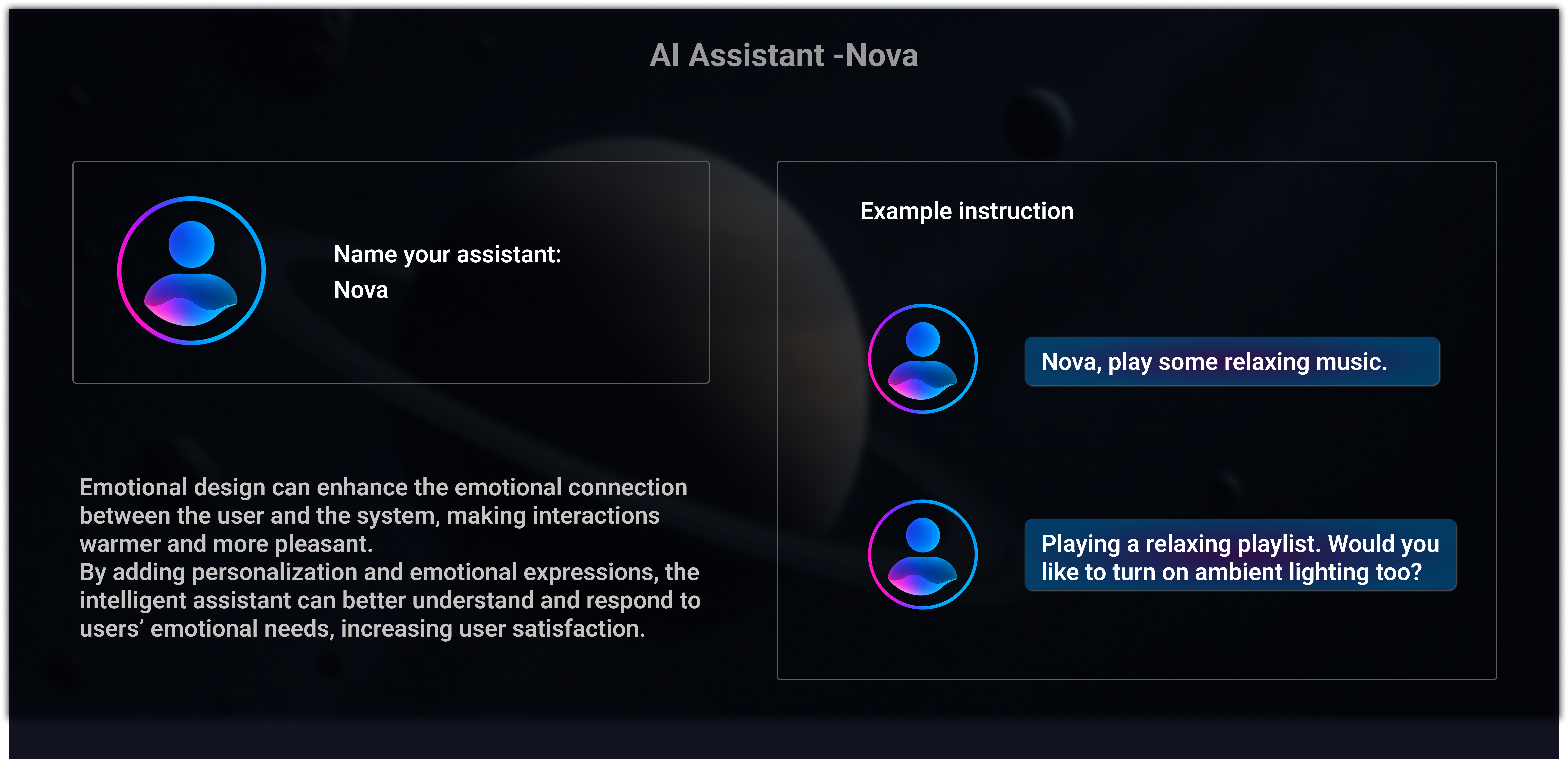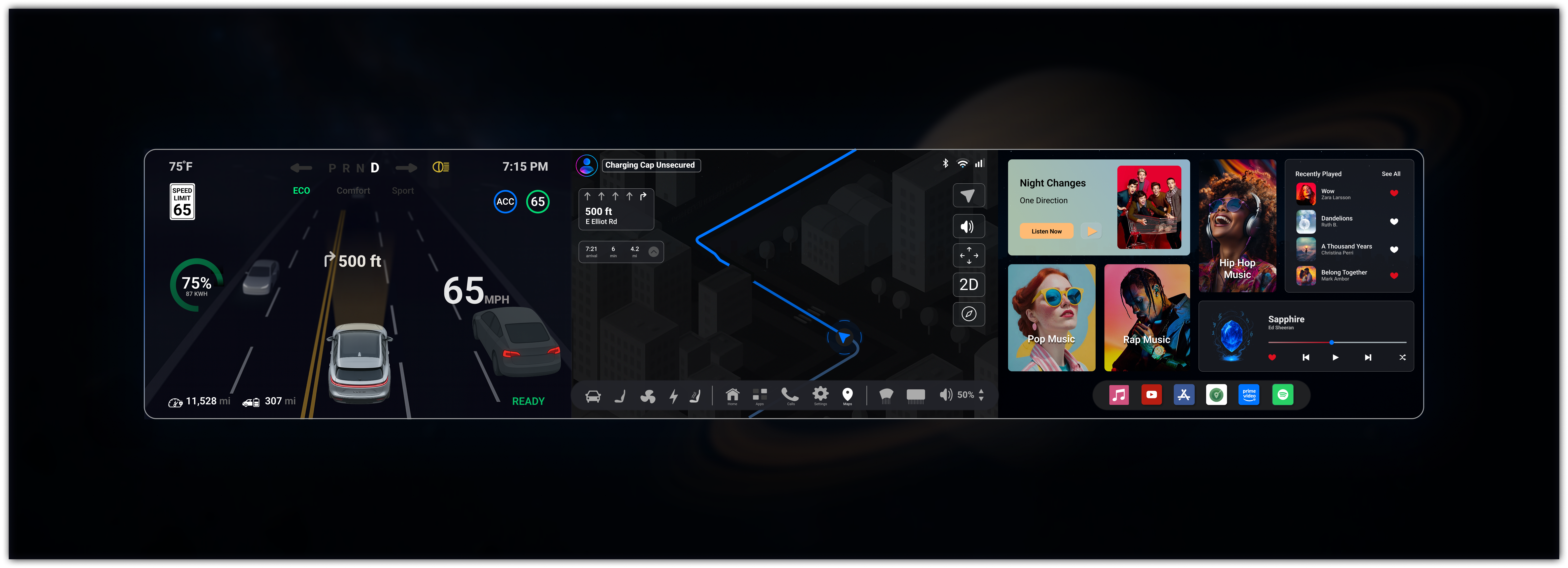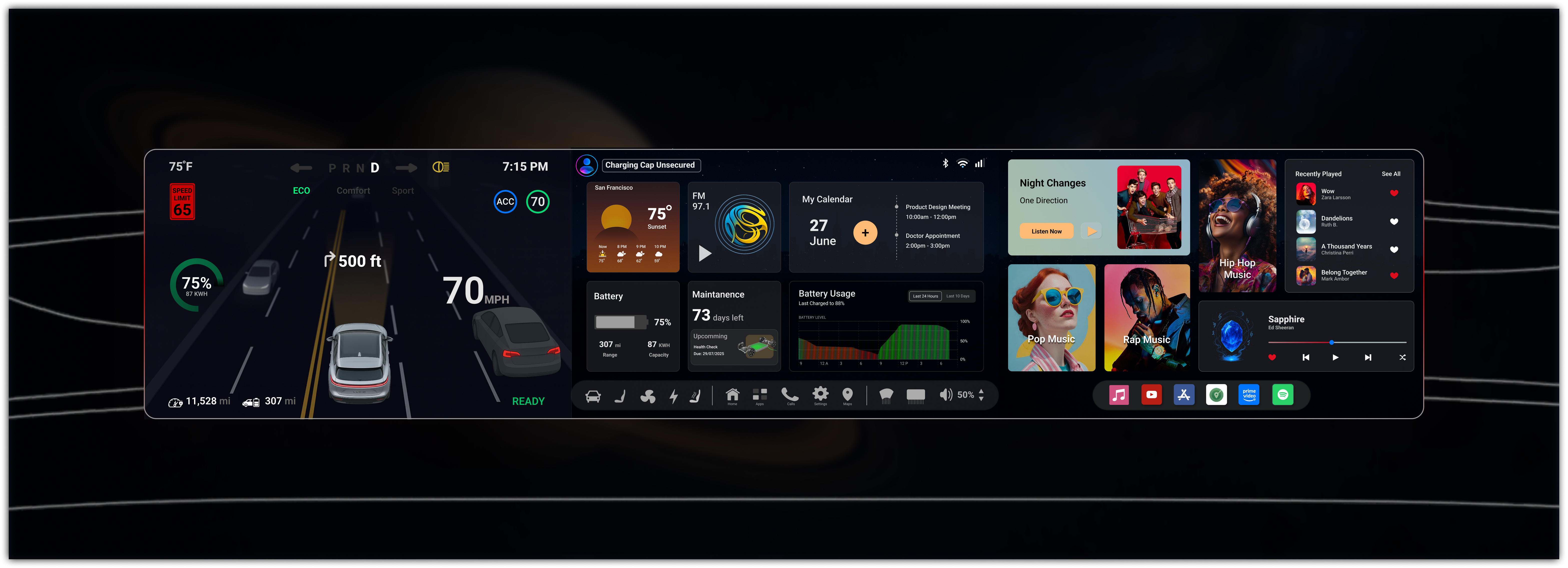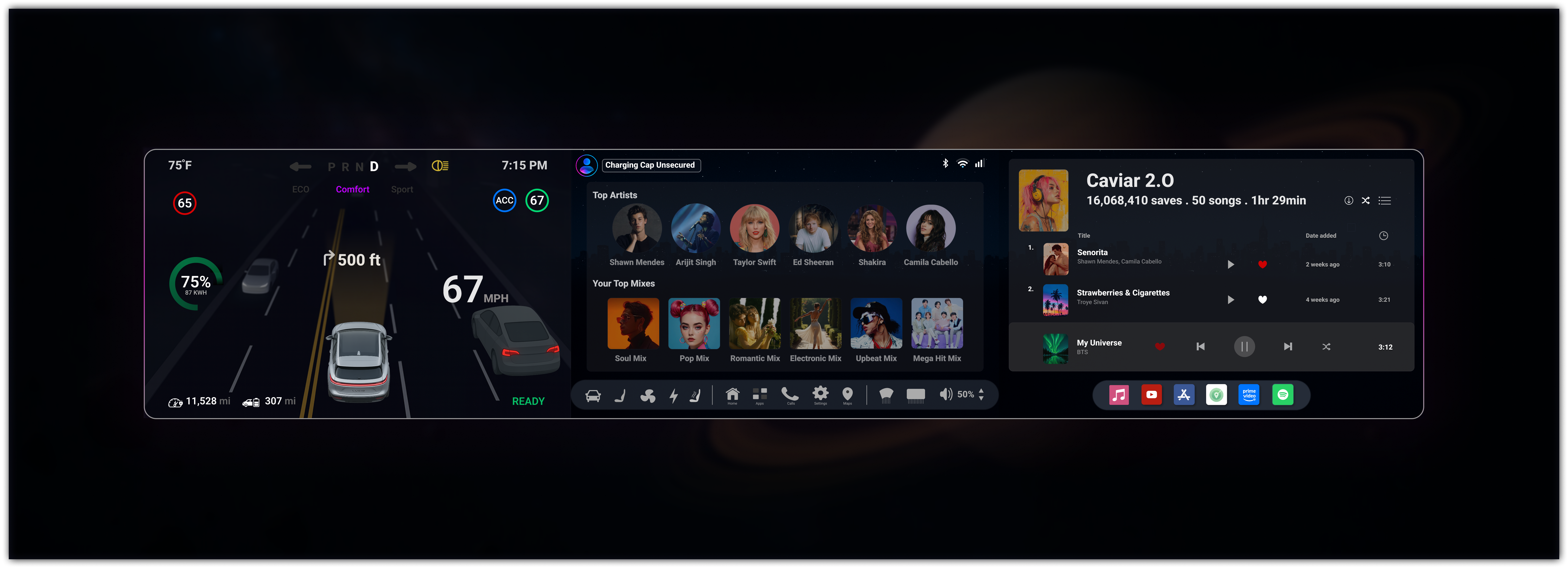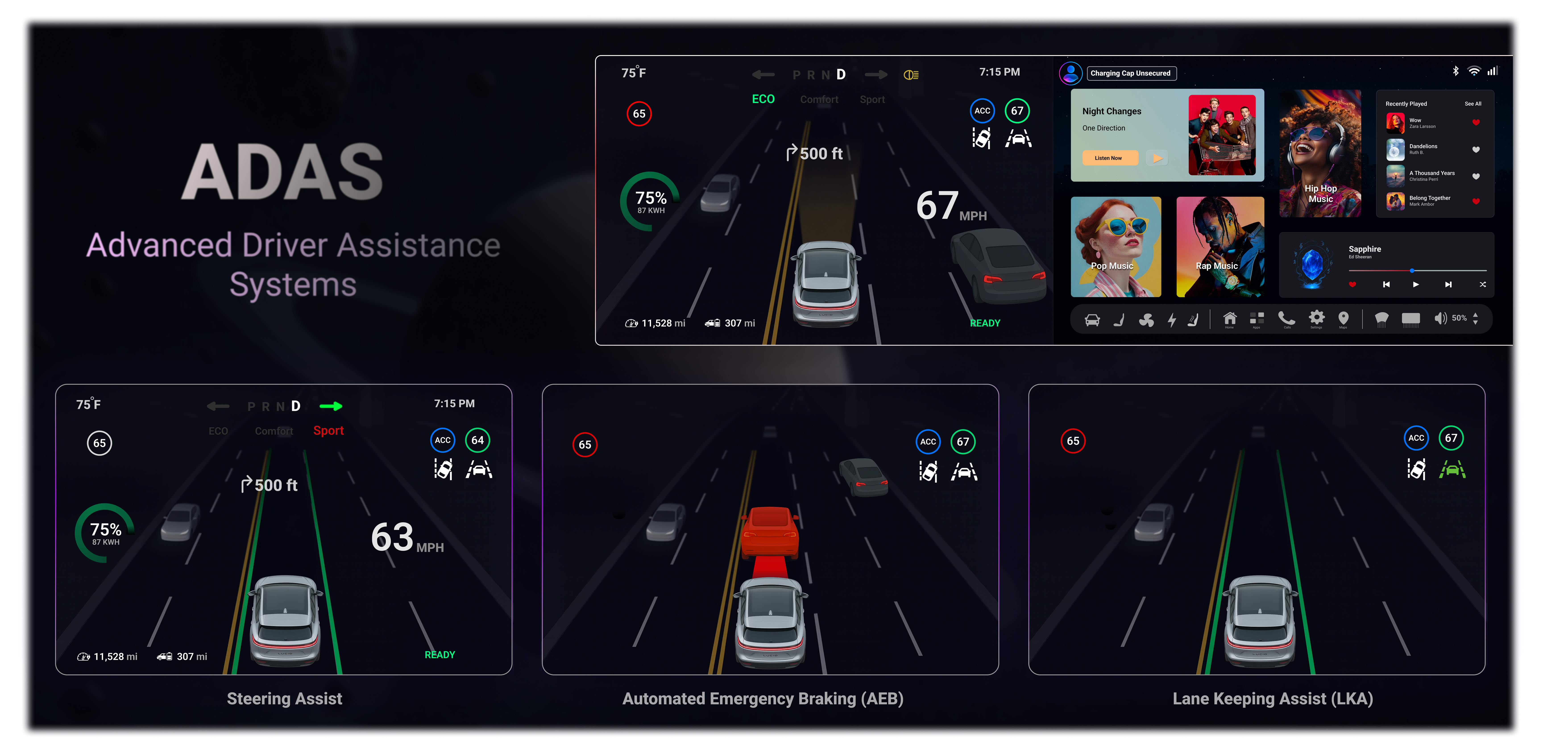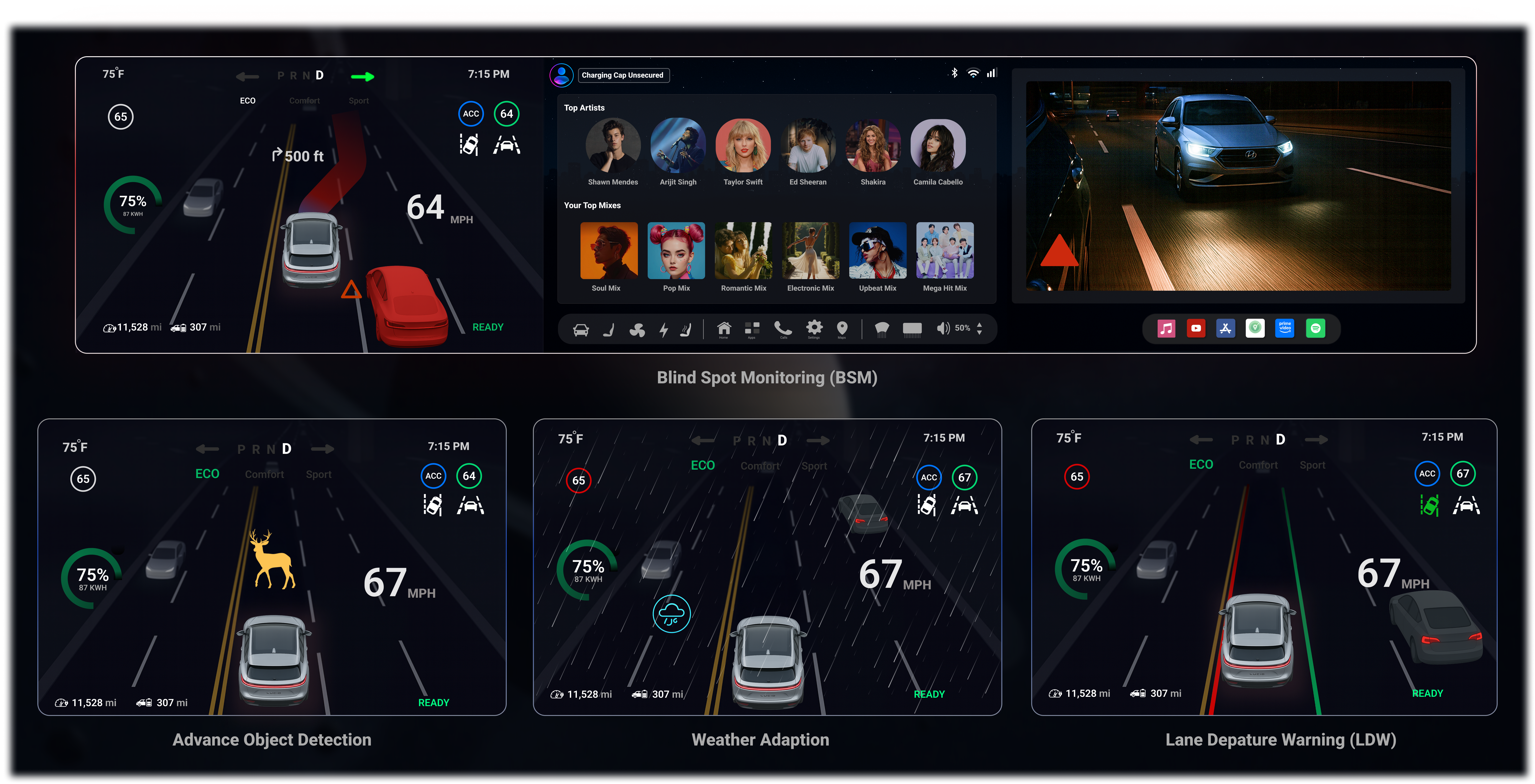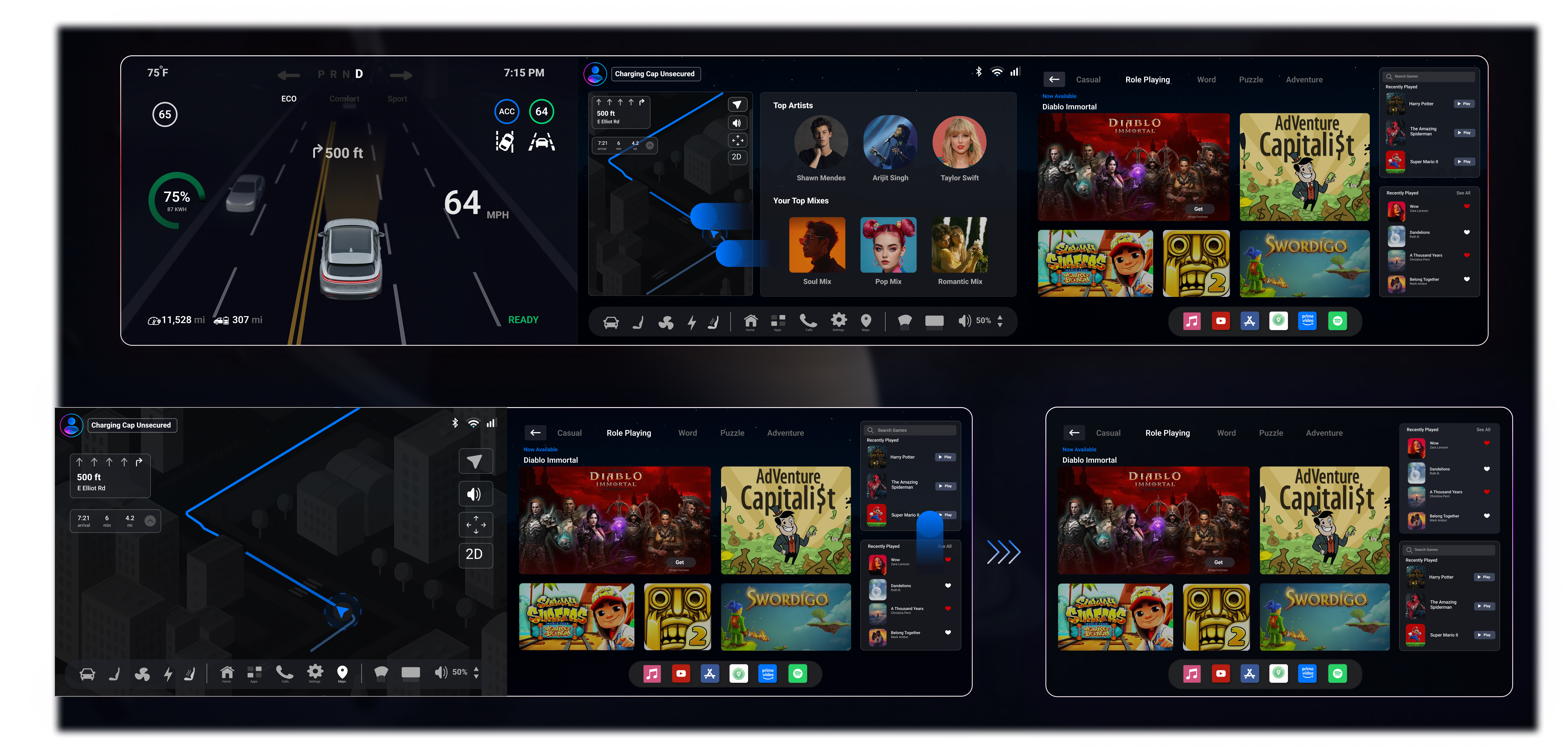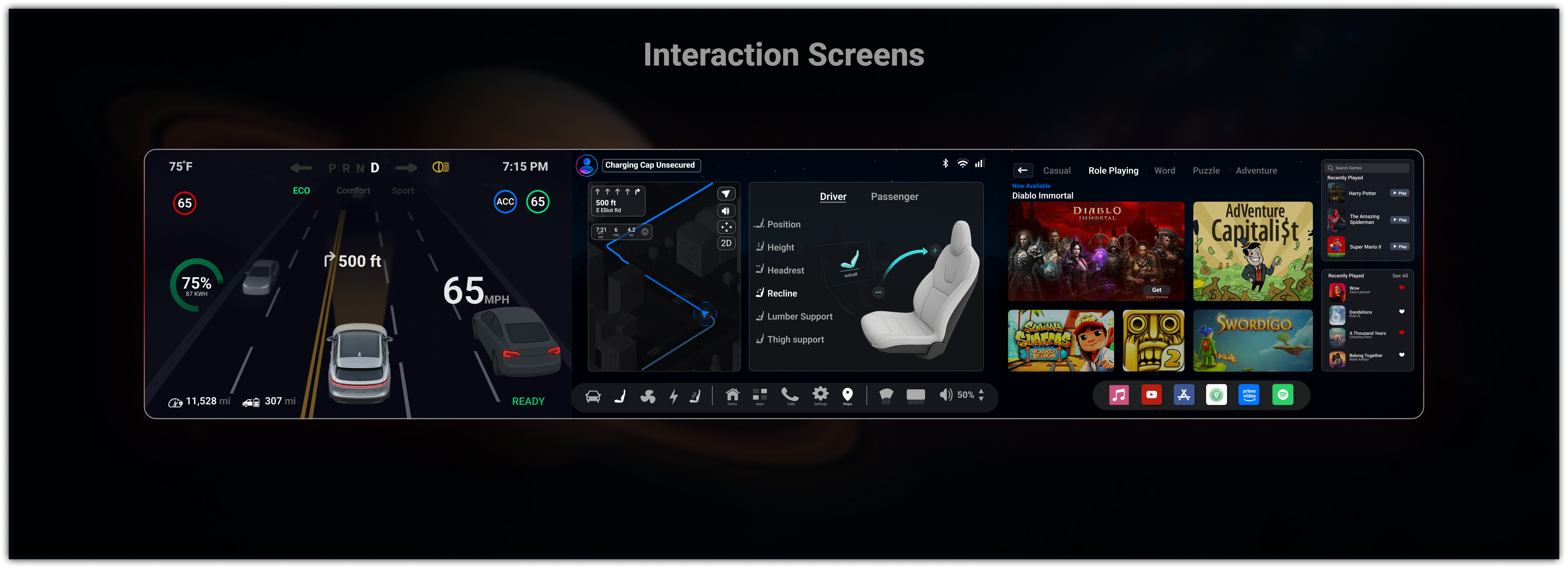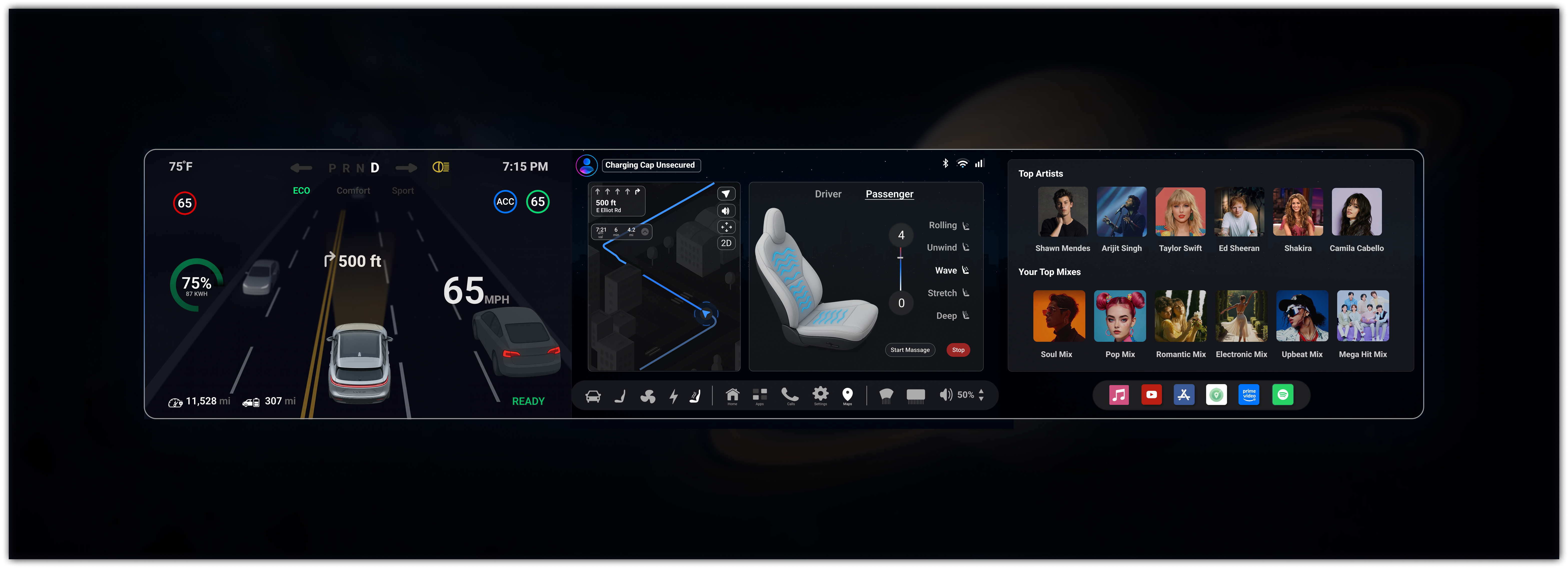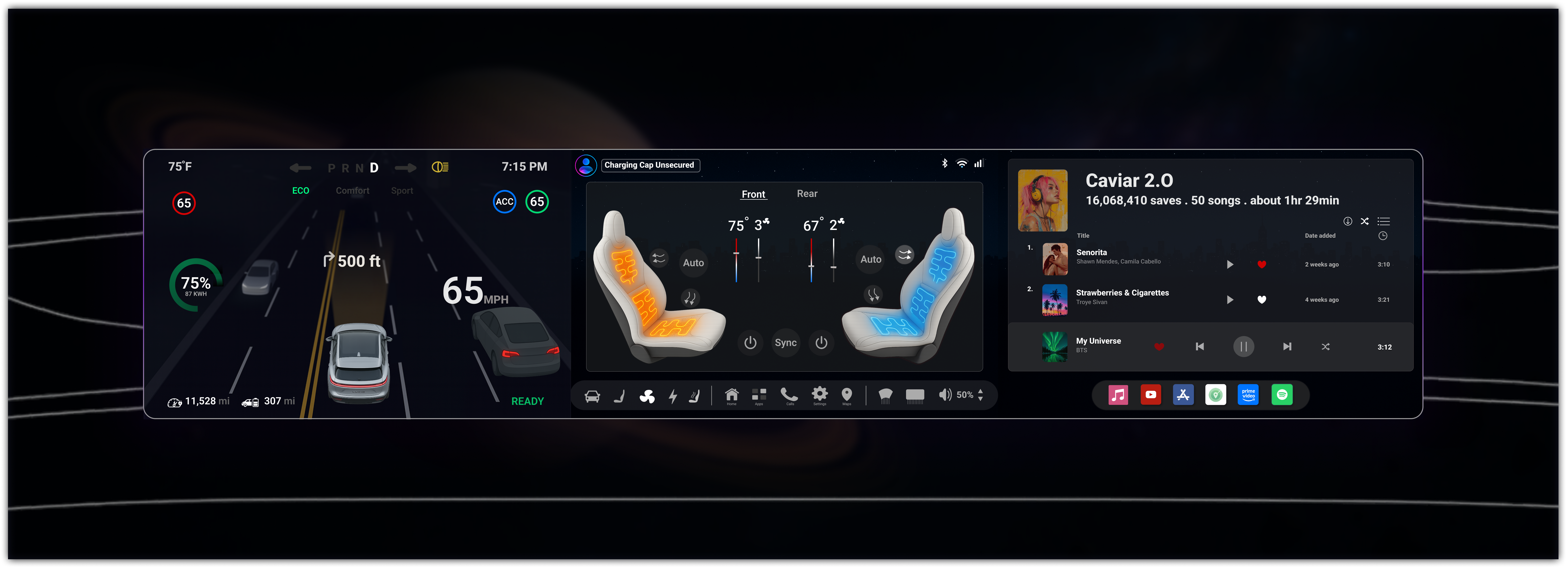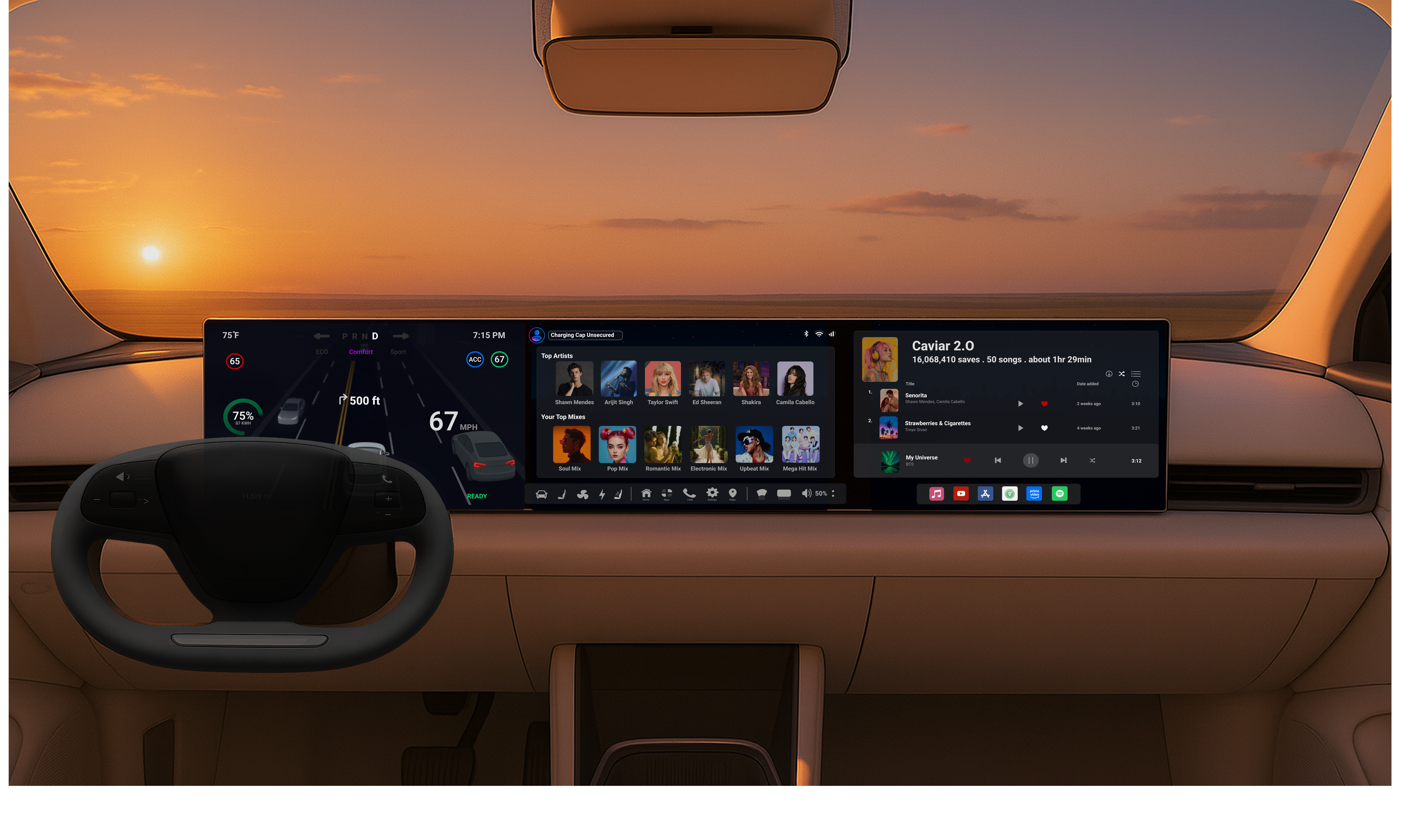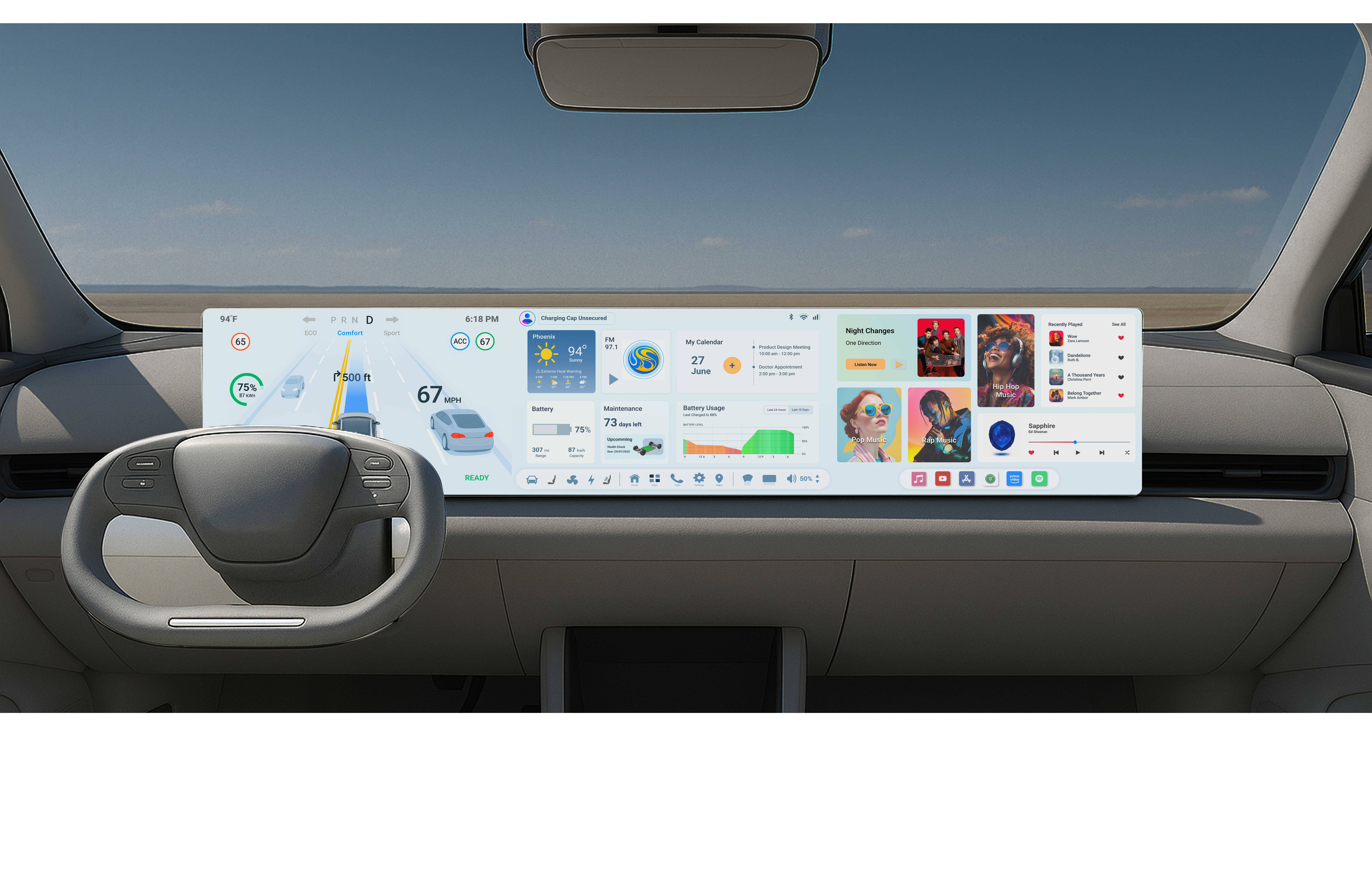Next-Gen Automotive HMI: Intuitive & Adaptive In-Car Experience
Year
2025
Tools
Figma, Illustrator, Photoshop
🧭 Project Overview
Designed a production-ready infotainment interface for electric vehicles with modular, driver-focused interaction models. Focused on safety, clarity, and minimal cognitive load while enabling seamless access to navigation, media, climate, and drive modes.
🛠 Problem Statement
Drivers face distraction due to cluttered and nested infotainment systems. The challenge was to create a touch-first, glanceable, and context-aware HMI that scales across screen sizes and adapts to driving conditions.
🔍 Process
User Research: Ride-alongs, user interviews, benchmark analysis of OEM systems, and safety standards (NHTSA, ISO).
Insights: Glance time must be under 2s. Users expect persistent climate access and predictable spatial layouts.
Design Solution: Card-based layout, night/day themes, visual feedback for drive modes, 48dp+ tap targets, modular scaling.
Testing & Iteration: Figma prototype tested with 15 users. Iterated on color contrast, minimized menu depth, and refined climate controls.
✅ Outcome
- 42% improvement in task completion time over previous OEM baseline
- Design scaled to 10–15” displays and considered in HUD roadmap
- Enhanced driver safety and reduced visual clutter
💡 Key Learnings
- Simplicity = clarity, not minimalism
- In-car UX must balance visual design with physical context (motion, light, distraction)
- Automotive HMI requires close collaboration with safety, hardware, and motion design teams
📸 HMI Frame Previews
